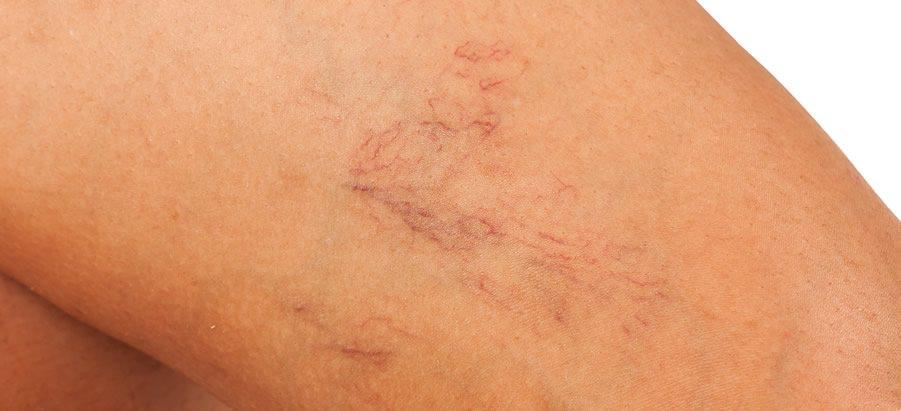Exploring the Advantages of Radiofrequency Treatment for Spider Veins
Varicose veins, also known as “spider veins,” are a common condition that affects many people. These unsightly veins are caused by a variety of factors, including genetics, pregnancy, and prolonged standing or sitting. While varicose veins can be a cosmetic concern, they can also lead to more serious health problems if left untreated. In this article, we will discuss the various treatment options for varicose veins, with a focus on the benefits of radiofrequency treatment.

What are varicose veins and how are they treated?
Varicose veins are enlarged, twisted, and often painful veins that are usually found in the legs. They occur when the valves in the veins that are supposed to prevent blood from flowing backwards fail to work properly. This allows blood to collect in the veins and cause them to enlarge.
There are several treatment options available for varicose veins, including sclerotherapy, endovenous laser therapy, and microphlebectomy. However, in recent years, radiofrequency treatment has become an increasingly popular option due to its many benefits.
What is radiofrequency treatment and how does it work?
Radiofrequency treatment, also known as RF ablation, is a minimally invasive procedure that uses heat energy to close the affected veins. During the procedure, a small catheter is inserted into the vein through a small incision. The catheter then delivers radiofrequency energy to the vein, causing it to shrink and close. This effectively stops blood flow through the vein and redirects it to other, healthier veins.
Benefits of radiofrequency treatment for varicose veins:
Minimally invasive: Unlike more traditional treatments, radiofrequency treatment is a minimally invasive procedure that requires only a small incision. This means less pain, bruising, and scarring for patients.
Quick recovery time: Most patients are able to return to normal activities the same day or the next day after the procedure.
High success rate: Radiofrequency treatment has a high success rate, with most patients experiencing significant improvement in the appearance and symptoms of their varicose veins.
Can be used on both legs and face: Radiofrequency treatment can be used to treat varicose veins on both the legs and face, making it a versatile option for patients.
Expected results after radiofrequency treatment:
- Immediate improvement in the appearance of the treated veins
- Reduced pain and discomfort
- Improved overall circulation
- Reduced risk of complications from varicose veins such as blood clots or ulcers
Treatment of facial varicose veins with radiofrequency:
Facial varicose veins, also known as spider veins, are small, red, purple, or blue vessels that are visible on the face. They are caused by the same factors that cause varicose veins in the legs and can be treated with radiofrequency treatment.
The procedure is similar to the one used to treat varicose veins in the legs, and can be performed in the same session. The results are usually visible immediately after the procedure and continue to improve over the next few weeks.
Treatment of varicose veins in legs with radiofrequency:
Varicose veins in the legs are a common problem, which can cause pain, discomfort, and an unsightly appearance. Radiofrequency treatment is an effective option for treating varicose veins in the legs, with results that are usually visible immediately after the procedure and continue to improve over.
The treatment of varicose veins is individualised and it is therefore important to consult a specialist to determine the best treatment option. Recovery and aftercare can vary depending on the type of treatment, and it is important to follow aftercare instructions to ensure the best possible outcome.
